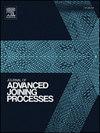A new approach to the reasons for dependency of defects formation to the process parameters in laser powder bed fusion of IN625 on the IN738LC substrate
IF 4
Q2 MATERIALS SCIENCE, MULTIDISCIPLINARY
引用次数: 0
Abstract
Degradation is a common phenomenon in gas turbine components. Among additive manufacturing (AM) methods like direct laser deposition (DLD) and laser powder bed fusion (LPBF), DLD has been widely studied due to its ease in repair processes. However, LPBF offers higher dimensional accuracy, better surface quality, and reduced stress. This study employed LPBF of IN625 on an IN738 substrate for repair purposes. A wide range of process parameters (power at 100, 150, and 200 W and scan speeds between 100 mm/s to 2700 mm/s) was evaluated. The reasons behind process parameters' influence on defect formation, such as pores and cracks, were investigated, as these aspects have been less emphasized in prior studies. The relationship between process parameters, melt pool shape, pore formation, and changes in elemental concentration was explored. It was found that concentration peaks at the interface are the main factor in crack formation, enabling predictions of cracking behavior. Elements diffuse from rich to poor regions at the IN625/IN738 interface. At scan speeds ≤ 500 mm/s, increasing speed and power both increase elemental concentration at the interface, but speed promotes elemental accumulation behind the interface, while power enhances homogenization. The effect of process parameters on microhardness and cell size was also examined. It was determined that cracks do not form in softer nickel-based matrices where microhardness remains below the critical threshold of 256 HV.
对IN625在IN738LC基板上激光粉末床熔接缺陷形成与工艺参数相关的原因进行了新的探讨
退化是燃气轮机部件中常见的现象。在直接激光沉积(DLD)和激光粉末床熔融(LPBF)等增材制造(AM)方法中,DLD因其易于修复而得到了广泛的研究。然而,LPBF提供更高的尺寸精度,更好的表面质量,并减少应力。本研究采用IN625的LPBF在IN738基板上进行修复。评估了广泛的工艺参数(功率为100、150和200 W,扫描速度为100 mm/s至2700 mm/s)。研究了工艺参数影响气孔和裂纹等缺陷形成的原因,因为这些方面在以往的研究中较少得到重视。探讨了工艺参数、熔池形状、孔隙形成与元素浓度变化之间的关系。发现界面处的浓度峰是裂纹形成的主要因素,可以预测裂纹行为。元素在IN625/IN738界面上从富裕地区向贫穷地区扩散。在扫描速度≤500 mm/s时,增大扫描速度和功率均能提高界面处元素浓度,但速度促进界面后元素积累,功率增强界面均质化。考察了工艺参数对显微硬度和胞口尺寸的影响。当显微硬度低于256hv的临界阈值时,较软的镍基基体不会形成裂纹。
本文章由计算机程序翻译,如有差异,请以英文原文为准。
求助全文
约1分钟内获得全文
求助全文

 求助内容:
求助内容: 应助结果提醒方式:
应助结果提醒方式:


